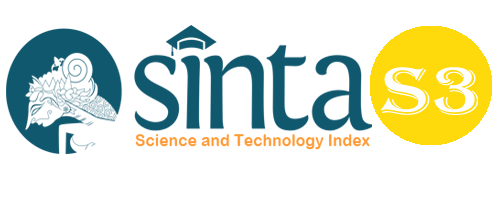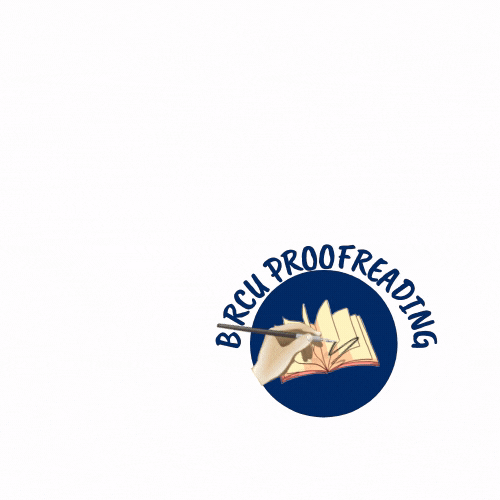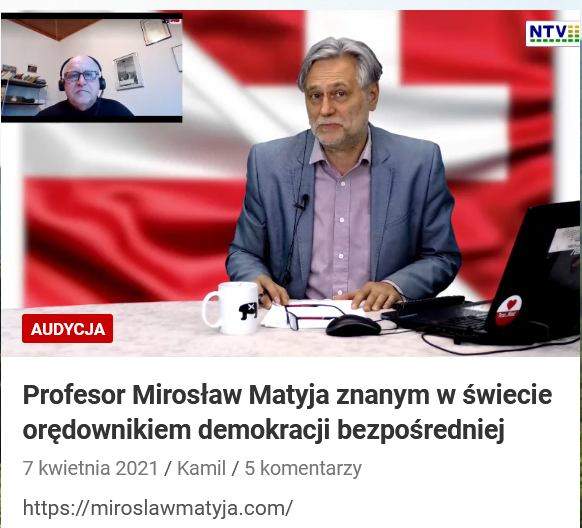New Media Literature: An Effort to Combat the Covid-19 Vaccine Hoax in Indonesia
Abstract
The mass media are often accused of being a source of spreading false news (hoax). This often happens especially in new media types (the internet). When the media or individuals put aside the truth of the news to catch up with the speed of news publication or create sensational titles to attract visitors when the reality is completely different. This study is based on the theory of social judgment (Social Judgment Theory), which is part of communication theory that describes and describes how individuals assess messages that begin when reading, listening or responding to a message. This research is a qualitative research that is library research that uses books and other literatures as the main object in Indonesian society. One way to deal with hoaxes, especially in terms of receiving the Covid-19 vaccine, is media literacy. There are seven skills needed to achieve critical awareness of media, including; Ability to analyze, evaluate, group (grouping), message induction, message deduction, message synthesis and make accurate descriptions. The high wave of Covid-19 vaccine hoaxes requires the awareness of the Indonesian people to be observant in filtering information so as to provide social change in vaccination behavior.
Keywords
Full Text:
PDFReferences
Altheide, D. (1995). An Ecology of Communication: Cultural Formats of Control. New York: Aldine de Gruyter.
Bara, A., et.al. (2021). The Effectiveness of Advertising Marketing in Print Media during the Covid 19 Pandemic in the Mandailing Natal Region. Budapest International Research and Critics Institute-Journal (BIRCI-Journal) Vol 4 (1): 879-886.
Baran, S.J., Dennis, K.D. (2010). Teori Komunikasi Massa Dasar, Pergolakan, dan Masa Depan. Jakarta: Salemba Humanika.
Croteau, D., & Hoynes, W. (1997). Media/Society: Industries, Images, and Audiences. London: Pine Forge Press.
Griffin, E., Ledbetter, A., & Sparks, G. (2019). A First Look at Communication Theory. New York: McGraw-Hill Education.
Haddon, L. (2006). Kontribusi penelitian domestikasi ke dalam rumah komputasi dan konsumsi media. Masyarakat Informasi, 22(4), 195– 203.
Hahn, H.P., Kibora, L. (2008). Domestikasi ponsel: Masyarakat lisan dan TIK baru di Burkina Faso. Jurnal Studi Afrika Modern, 46(1), 87–109.
Hopkins, J. (2021). Coronavirus Resource Center. Johns Hopkins Resource University & Medicine. https://coronavirus.jhu.edu
https://covid19.go.id/p/hoax-buster/awas-hoaks-ribuan-orang-di-indonesia-meninggal-dunia-setelah-vaksin-covid-19. (2021, Oktober 13). Retrieved from https://covid19.go.id/p/hoax-buster/awas-hoaks-ribuan-orang-di-indonesia-meninggal-dunia-setelah-vaksin-covid-19: https://covid19.go.id/p/hoax-buster/awas-hoaks-ribuan-orang-di-indonesia-meninggal-dunia-setelah-vaksin-covid-19
https://turnbackhoax.id/2021/08/27/salah-vaksin-corona-mengandung-babi-dapat-merubah-dna-dan-membuat-manusia-jadi-zombie/. (2021, Agustus 27). Retrieved from https://turnbackhoax.id/2021/08/27/salah-vaksin-corona-mengandung-babi-dapat-merubah-dna-dan-membuat-manusia-jadi-zombie/: https://turnbackhoax.id/2021/08/27/salah-vaksin-corona-mengandung-babi-dapat-merubah-dna-dan-membuat-manusia-jadi-zombie/
https://vaksin.kemkes.go.id/#/vaccines. (2021, Desember 6). Retrieved from https://vaksin.kemkes.go.id/#/vaccines: https://vaksin.kemkes.go.id/#/vaccines
https://www.kompas.com/tren/read/2021/04/20/200533265/hoaks-video-vaksin-covid-19-mrna-dapat-mengubah-orang-jadi-zombie?page=1. (2021, April 20). Retrieved from https://www.kompas.com/tren/read/2021/04/20/200533265/hoaks-video-vaksin-covid-19-mrna-dapat-mengubah-orang-jadi-zombie?page=1: https://www.kompas.com/tren/read/2021/04/20/200533265/hoaks-video-vaksin-covid-19-mrna-dapat-mengubah-orang-jadi-zombie?page=1
https://www.unicef.org/indonesia/id/coronavirus/cerita/hoaks-membunuh-ayahku-menyingkap-pandemi-lain-di-indonesia
Iza, N. (2017, January 8). https://kominfo.go.id/content/detail/8710/siaran-pers-no-2hmkominfo012017-tentang%20gerakan-bersama-anti-hoax-danpeluncuran-turnbackhoaxid/0/siaran_pers. Retrieved from https://kominfo.go.id/content/detail/8710/siaran-pers-no-2hmkominfo012017-tentang%20gerakan-bersama-anti-hoax-danpeluncuran-turnbackhoaxid/0/siaran_pers: https://kominfo.go.id/content/detail/8710/siaran-pers-no-2hmkominfo012017-tentang%20gerakan-bersama-anti-hoax-danpeluncuran-turnbackhoaxid/0/siaran_pers
Katadata Insight Center. (2021). Survei kesediaan divaksinasi Covid-19. https://cdn1.katadata.co.id/media/files/KIC_Survei Perilaku Vaksinasi Masyarakat_12031 FIX.pdf
Kementerian Kesehatan, I. U. (November 2020). Survei Penerimaan Vaksin COVID-19 di Indonesia.
Markham, T. (2017). Media and Everyday Life. London: Palgrave.
McQuail, D. (1987). Mass Communication Theory: An Introduction.—2nd ed. London: SAGE Publications Ltd.
Moores, S. (1993). Interpreting Audiences: The Ethnography of Media Consumption. London: SAGE Publications Ltd.
Ningrum, P.A., Hukom, A., and Adiwijaya, S. (2020). The Potential of Poverty in the City of Palangka Raya: Study SMIs Affected Pandemic Covid 19. Budapest International Research and Critics Institute-Journal (BIRCI-Journal) Vol 3 (3): 1626-1634.
Potter, J. (2011). Media Literacy. Los Angeles, London, New Delhi, Singapore, Washington DC: Sage Publication.
Priastuty, C., Pawito, & Rahmanto, A. (2020). Hoaks tentang Vaksin Covid-19 di Tengah Media Sosial. Prosiding Seminar Nasional Prominus, 9.
Purwadi, D. (2017, December 12). https://nasional.republika.co.id/berita/nasional/umum/17/12/12/p0uuby257-ada-800000-situs-penyebar-hoax-di-indonesia. Retrieved from https://nasional.republika.co.id/berita/nasional/umum/17/12/12/p0uuby257-ada-800000-situs-penyebar-hoax-di-indonesia: https://nasional.republika.co.id/berita/nasional/umum/17/12/12/p0uuby257-ada-800000-situs-penyebar-hoax-di-indonesia
Rahayu, R.N., & Sensusiyati. (2021). Vaksin Covid 19 di Indonesia: Analisis Berita Hoax. Intelektiva: Jurnal Ekonomi, Sosial, dan Humaniora, 02(07), 39–49.
Sherif, M., & Hovland, C.I. (1980). Social Judgement: Assimilation and Contrast Effect in Communication and Attitude Change. West Port, Conn.: Greenword Press.
Sihombing, E.H., and Nasib. (2020). The Decision of Choosing Course in the Era of Covid 19 through the Telemarketing Program, Personal Selling and College Image. Budapest International Research and Critics Institute-Journal (BIRCI-Journal) Vol 3 (4): 2843-2850.
Silverstone, R., Hirsch, E. (1992). Consuming Technology: Media and Information in the Domestic Space. London: Routledge.
Sudijono, A. (2009). Pengantar evaluasi pendidikan. Jakarta: Rajagrafindo.
Wahid, A., & Labib, M. (2010). Kejahatan Mayantara (Cyber Crime). Bandung: Refika aditama.
Webster, F. (2006). Theories of the Information Society. New York: Routledge.
www.unicef.org. (2021, August 5). Retrieved from https://www.unicef.org/indonesia/id/coronavirus/cerita/hoaks-membunuh-ayahku-menyingkap-pandemi-lain-di-indonesia:
Yusuf, Oik. (2017). Perlawanan "Netizen" Lahirkan Masyarakat Anti-“hoax”. Diakses dari https://tekno.kompas.com/read/2017/01/08/10495047/perlawanan.netizen.lahirkan.masyarakat.anti-.hoax.
DOI: https://doi.org/10.33258/birci.v5i1.3838
Article Metrics
Abstract view : 120 timesPDF - 65 times
Refbacks
- There are currently no refbacks.

This work is licensed under a Creative Commons Attribution-ShareAlike 4.0 International License.

This work is licensed under a Creative Commons Attribution-ShareAlike 4.0 International License.

_.gif)

















_.gif)



